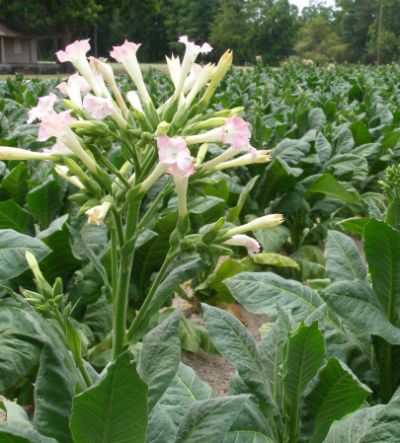“Tobacco’s first encounter with Europe was in the palace gardens in Spain and Portugal, from where it spread to the rest of the continent, first because of its beauty, and later because of the medical properties that were assigned to it.” ~Katarina
 Tobacco’s genus, Nicotiana, covers over 70 species. The name tobacco usually refers to most famous and widely used Nicotiana Tabacum and its shorter but more potent cousin Nicotiana Rustica, both native to the Americas.
Tobacco’s genus, Nicotiana, covers over 70 species. The name tobacco usually refers to most famous and widely used Nicotiana Tabacum and its shorter but more potent cousin Nicotiana Rustica, both native to the Americas.
Although it’s hard to pinpoint when and where it was first cultivated, it is sure tobacco has been used for several thousand years before the time Christopher Columbus reached Americas in 1492, and after that it spread to the whole world.
Although in present-day society associated with a myriad of health issues, including cancer and cardiovascular diseases, this plant has been used for medicinal, as well as ritual purposes for millennia. Only in the last decades tobacco has been aggressively proclaimed harmful. Up until the ‘50s they even had doctors promoting them. Why it is so?
Throughout South and North America, tobacco was used consumed in a diversity of ways: it was chewed, sniffed, smoked, eaten, juiced, smeared over bodies, and used in eye drops and enemas. Its use varied depending on the culture and location – it ranged from medicinal as a remedy for many ailments, to purely recreational consumed by both men and women, and also mystical – a connection to the spiritual world: it´s purifying smoke was blown over fields before planting, over women prior to sex, blown into warriors’ faces before battle, it was offered to gods as well as accepted as their gift. In other words, tobacco smoke was believed to carry blessings, protection and most of all purification. Continue reading
